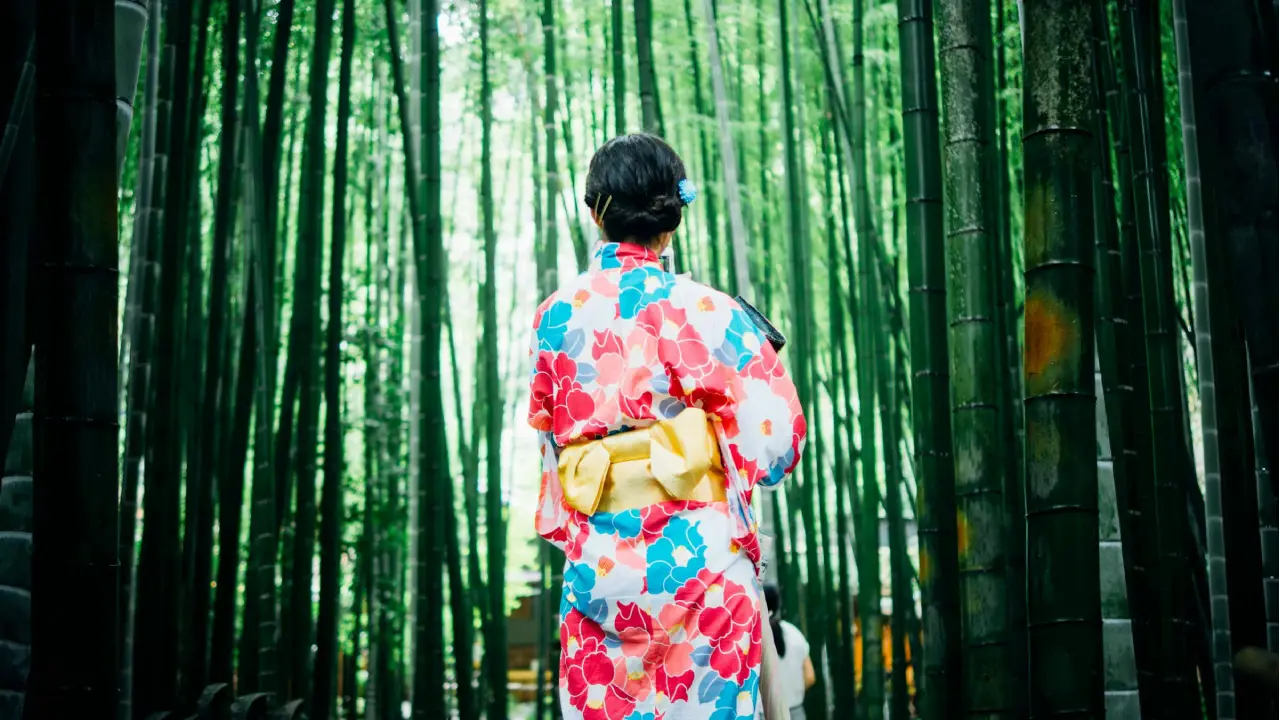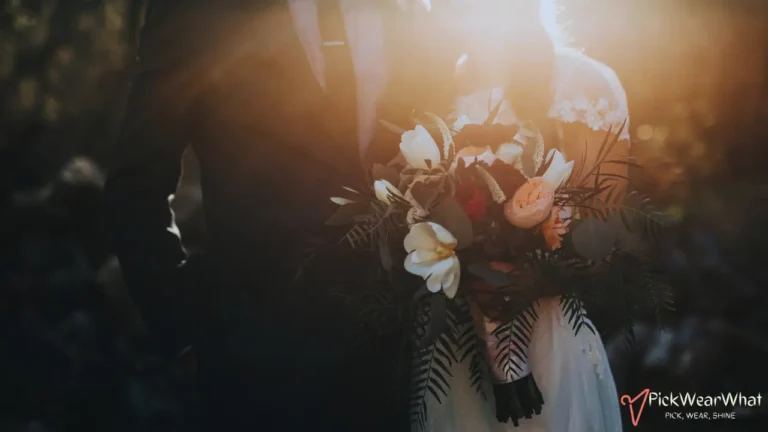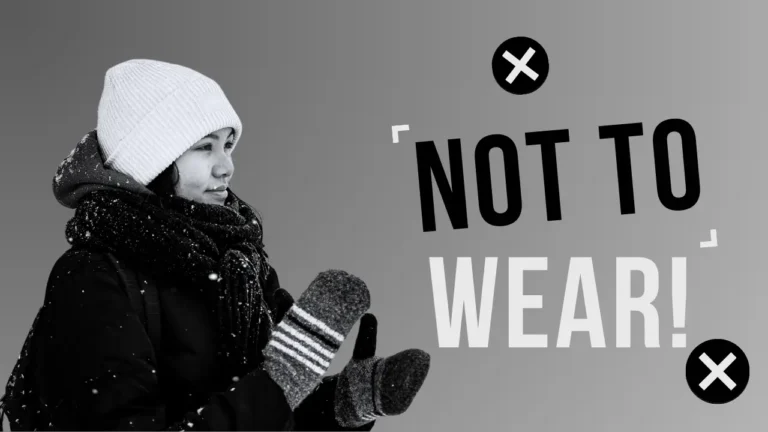In Japan, you should avoid wearing overly casual, revealing, or flashy clothing. Japan is known for its emphasis on modesty and respect, so it’s important to dress conservatively, especially in public or formal settings.
Avoid clothing like tank tops, shorts, or anything too tight or revealing, as this can be considered inappropriate. Flashy accessories or bold, loud colors should also be avoided, as they may come across as disrespectful. Instead, opt for more neutral tones and modest styles to blend in with the local culture and show respect for Japanese customs.
What Not To Wear in Japan as a Female?
You should not wear these things as a female in Japan:
- Avoid Revealing Clothing: Steer clear of low-cut tops, short skirts, or shorts, as these are considered inappropriate in many public and formal settings in Japan.
- Skip Tank Tops: Refrain from wearing tank tops or clothing that shows too much skin, especially when visiting cultural or religious sites like temples and shrines.
- No Flashy Accessories: Avoid wearing bold, flashy accessories that may draw unnecessary attention or seem disrespectful.
- Stay Away from Loud Colors: Bright, bold colors and loud prints can be seen as too attention-grabbing, so it’s best to opt for more muted, neutral tones.
- Avoid Casual Wear in Formal Settings: Items like ripped jeans, graphic tees, or overly casual clothing should be avoided in more formal or public situations.
What Not To Wear in Japan as a Male?
You should not wear these things as a male in Japan:
- Avoid Casual Clothing: Steer clear of overly casual attire like ripped jeans, graphic t-shirts, or shorts, especially in formal or public settings.
- Skip Sleeveless Tops: Refrain from wearing tank tops or sleeveless shirts, as showing too much skin can be seen as disrespectful in certain environments.
- No Loud Prints or Bright Colors: Avoid bold patterns and bright, flashy colors that may draw unnecessary attention or seem inappropriate in more conservative settings.
- Avoid Open-Toed Shoes: In more formal or traditional settings, it’s best to avoid sandals or flip-flops. Instead, opt for closed-toe shoes that convey a more polished look.
- Limit Flashy Accessories: Keep accessories minimal and understated, as overly bold or flashy items may be seen as out of place.
How To Dress in Japan as a Male Tourist?
You should dress modestly and respectfully as a male tourist in Japan, blending comfort with a sense of formality. Here are some guidelines:
- Opt for Smart-Casual Clothing: Choose outfits that are neat and presentable. A button-down shirt, polo, or plain t-shirt paired with chinos or well-fitted jeans is appropriate for most settings.
- Layer with a Light Jacket: Japan’s weather can vary, so bring a light jacket or blazer, especially in spring or fall. It adds a touch of formality and keeps you comfortable in cooler temperatures.
- Wear Comfortable, Closed-Toe Shoes: Comfortable walking shoes like loafers or sneakers are ideal for exploring, but ensure they are clean and in good condition. Avoid flip-flops or overly casual sandals.
- Respect Religious and Cultural Sites: When visiting temples, shrines, or other cultural sites, dress more conservatively by avoiding sleeveless tops and wearing long pants. Consider carrying a light scarf to cover your shoulders if needed.
- Stick to Neutral Tones: While you can wear colors, opting for neutral or muted tones will help you blend in more with the local culture and avoid standing out.
- Minimal Accessories: Keep accessories simple and functional, like a watch or a basic belt. Avoid anything too flashy or attention-grabbing.
What Colors Not To Wear in Japan?
You should avoid wearing these colors in Japan, especially in more formal or traditional settings:
- Bright Red: While red is not taboo, it is often associated with celebrations like weddings, so wearing bright red in other contexts can be seen as inappropriate or overly attention-grabbing.
- Pure White: White is often associated with funerals and mourning in Japan, so it’s best to avoid wearing all-white outfits, especially in formal settings.
- Bold Neon Colors: Neon colors, such as bright yellows, greens, or pinks, can be seen as too loud and flashy, making you stand out in a way that might be considered disrespectful.
- Black for Casual Wear: While black is acceptable in formal wear, wearing all-black casually can be associated with mourning, so it’s better to mix black with other colors in less formal situations.
- Loud Patterns: Even if the colors themselves are not bright, loud patterns can be seen as distracting or inappropriate in certain settings.
Can I Wear Green in Japan?
Yes, you can wear green in Japan. Green is not associated with any negative cultural connotations, and it is generally seen as a neutral and natural color. It’s perfectly fine to wear green in both casual and formal settings.
Just like with any color, it’s best to choose shades that are not overly bright or flashy if you want to maintain a more subdued and respectful appearance. Earthy or muted tones of green, like olive or forest green, are particularly well-suited for blending in with local fashion norms.
FAQs On What Not To Wear in Japan?
Wearing white is generally fine, but it’s important to avoid it at weddings or celebratory events, as white is traditionally associated with mourning and funerals in Japan.
Black clothing is common in Japan, but it’s primarily associated with funerals and mourning. Wearing all-black attire in casual or festive settings might be considered inappropriate.
Red is a bold color that can symbolize strong emotions like anger or aggression. It’s best to avoid wearing red in professional or formal settings to avoid sending the wrong message.
Purple is traditionally associated with nobility and the imperial family in Japan. While it’s not offensive, wearing purple in casual or informal settings might be seen as inappropriate.




